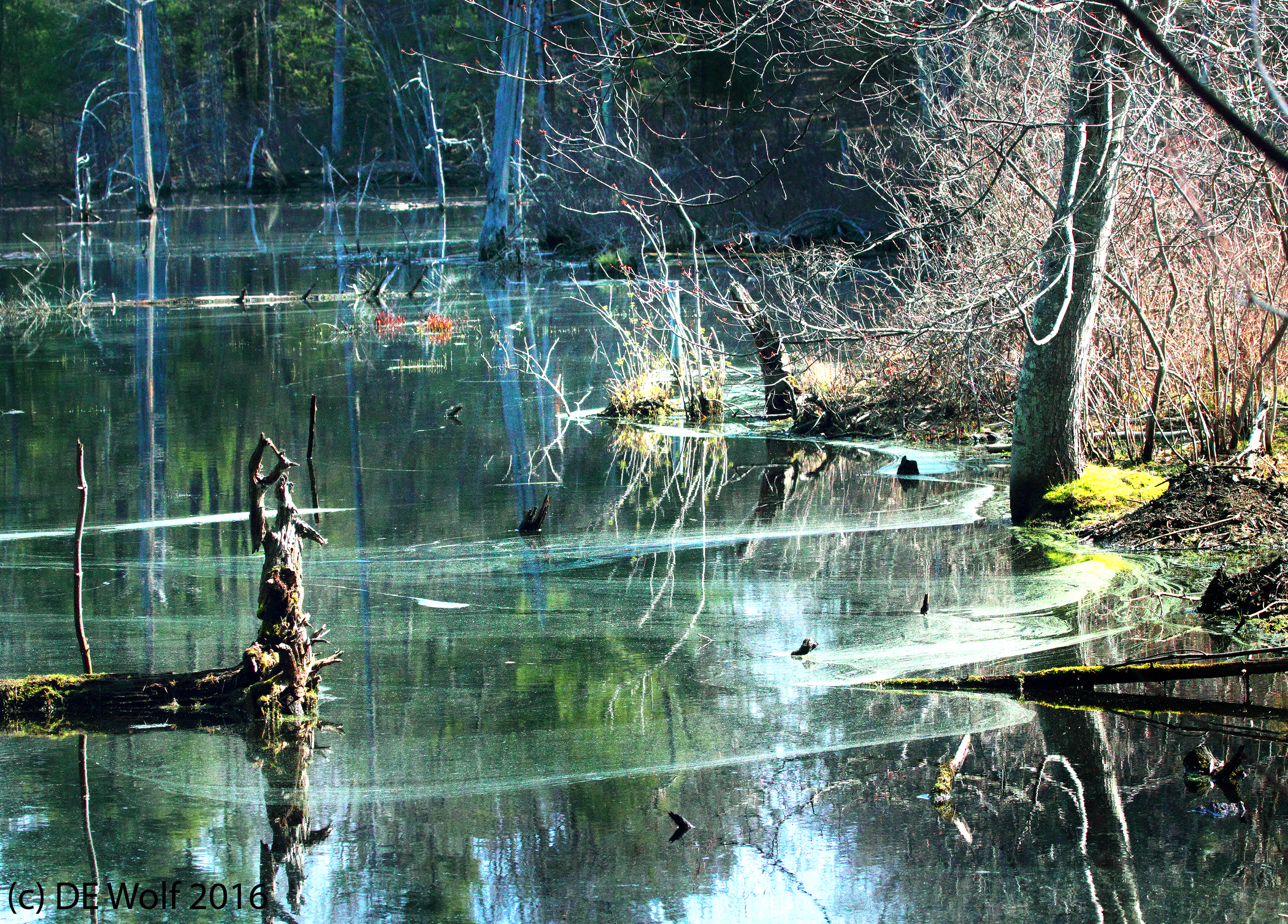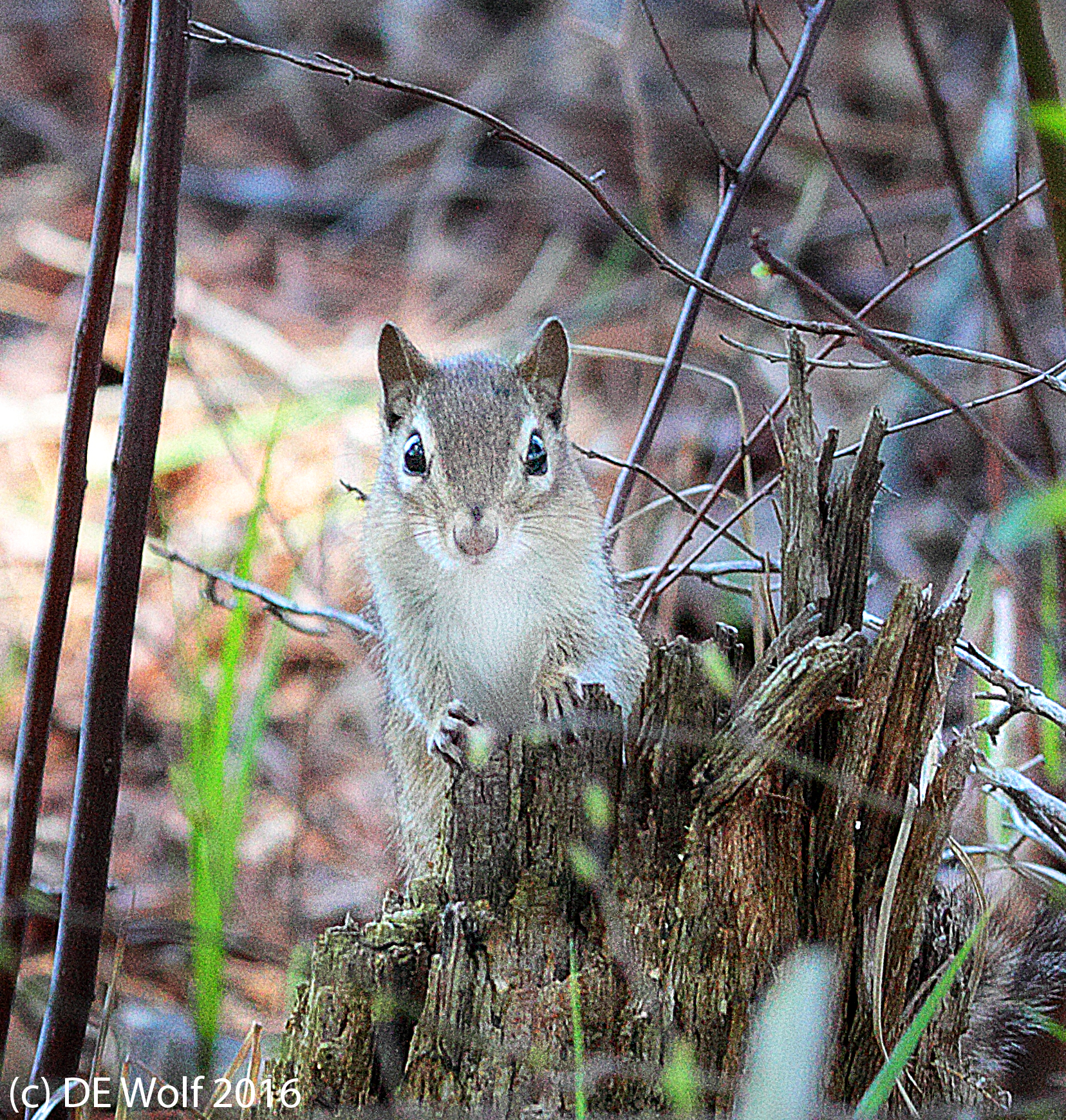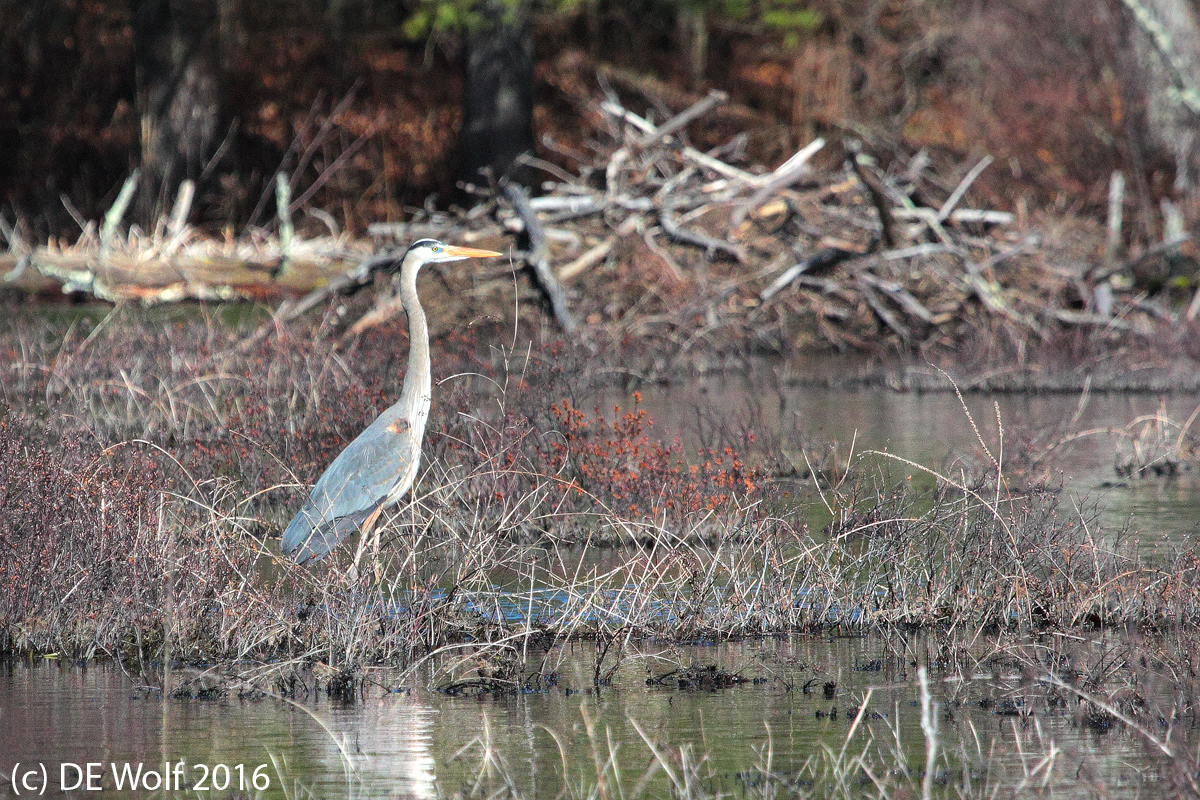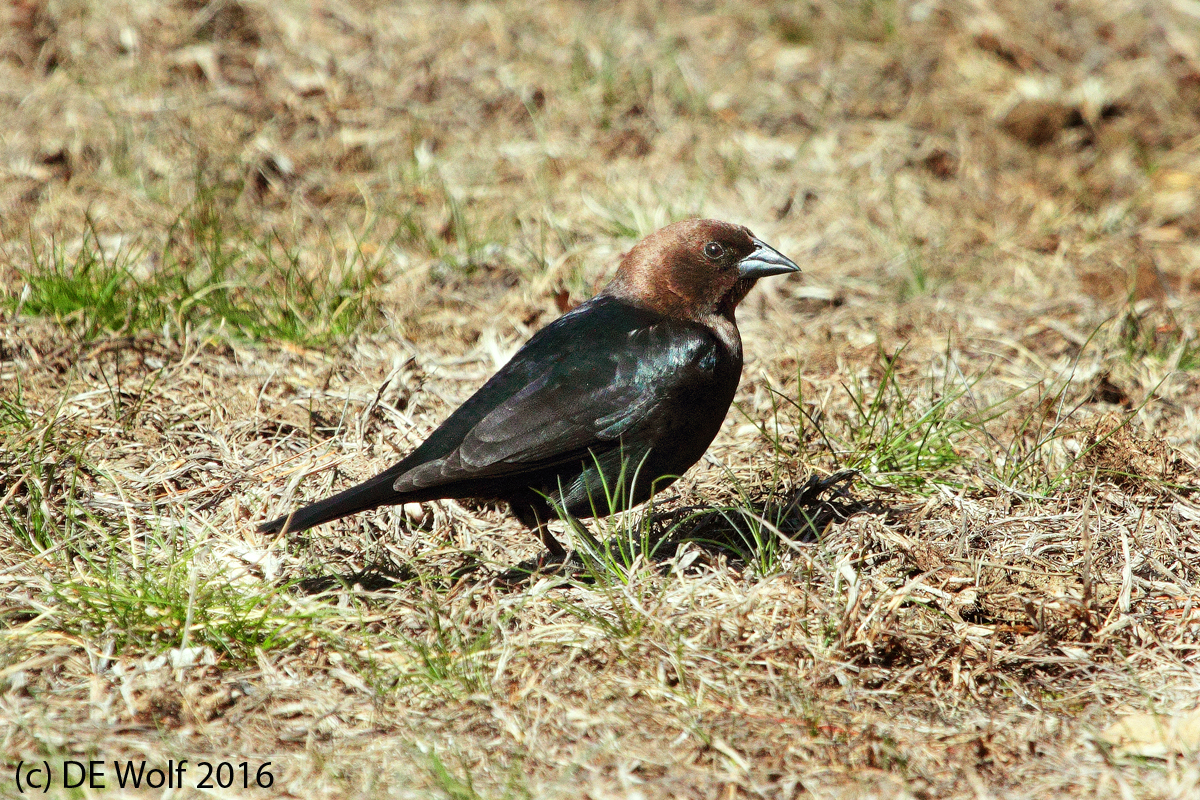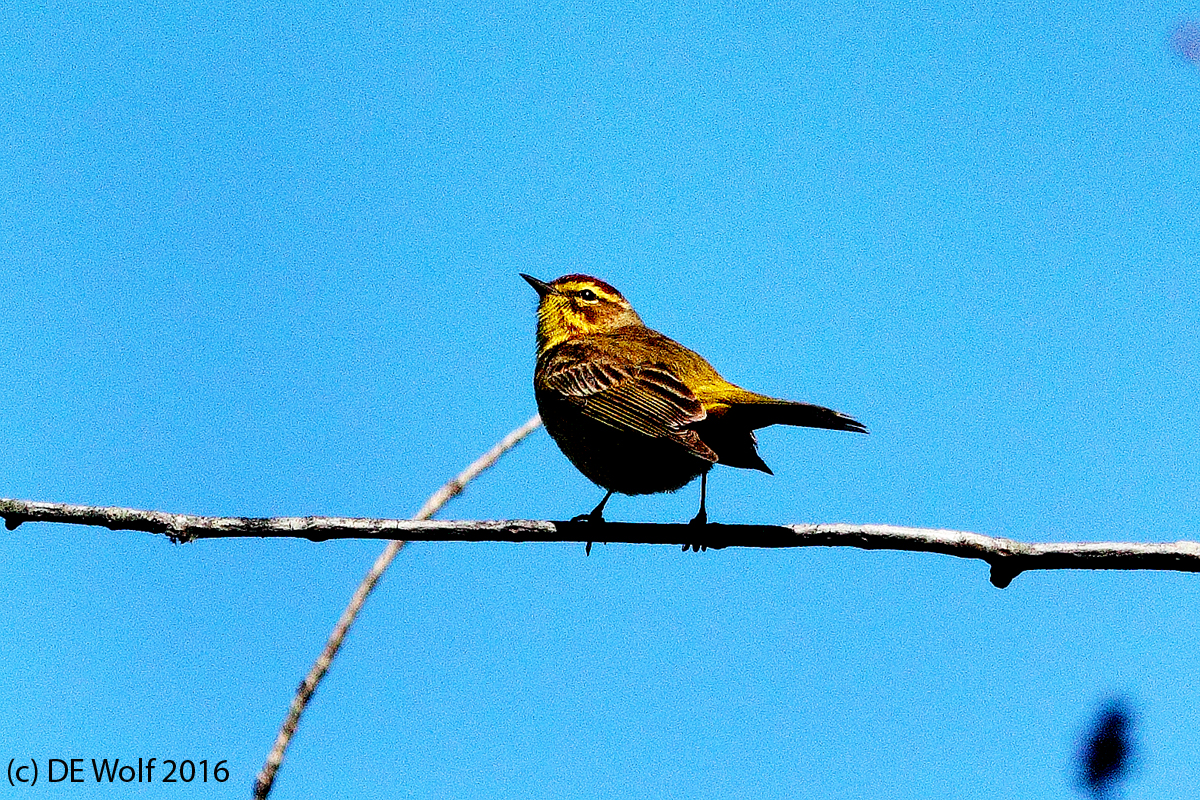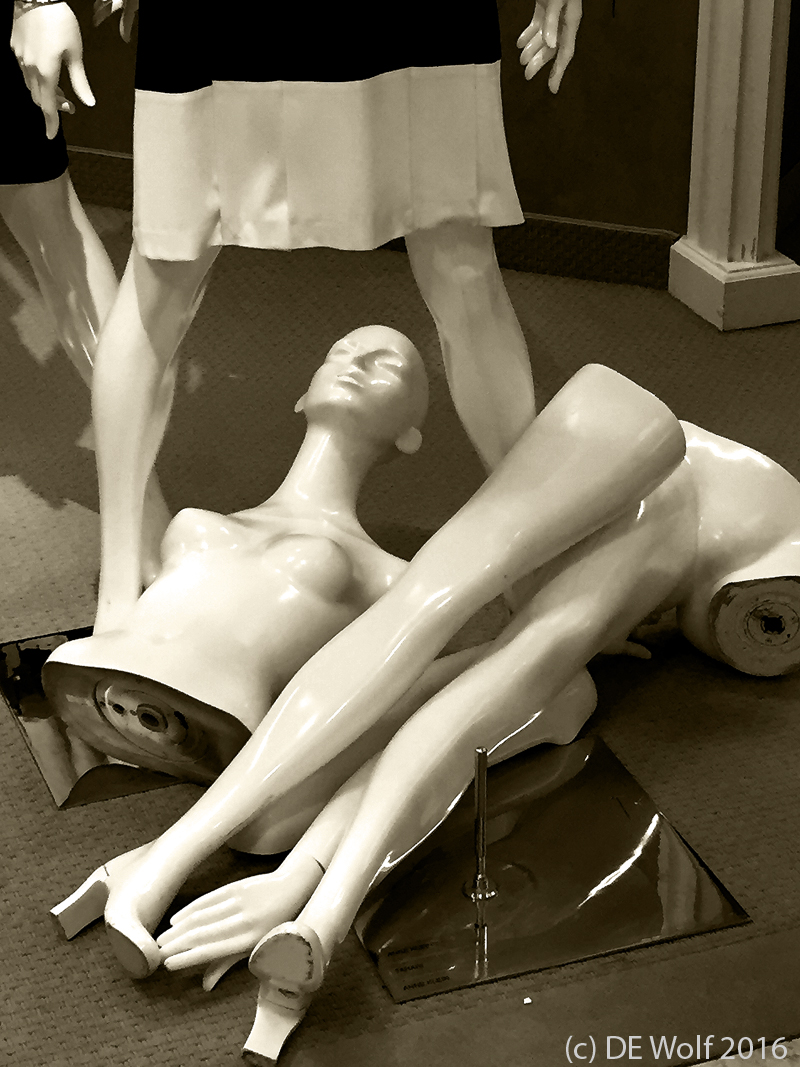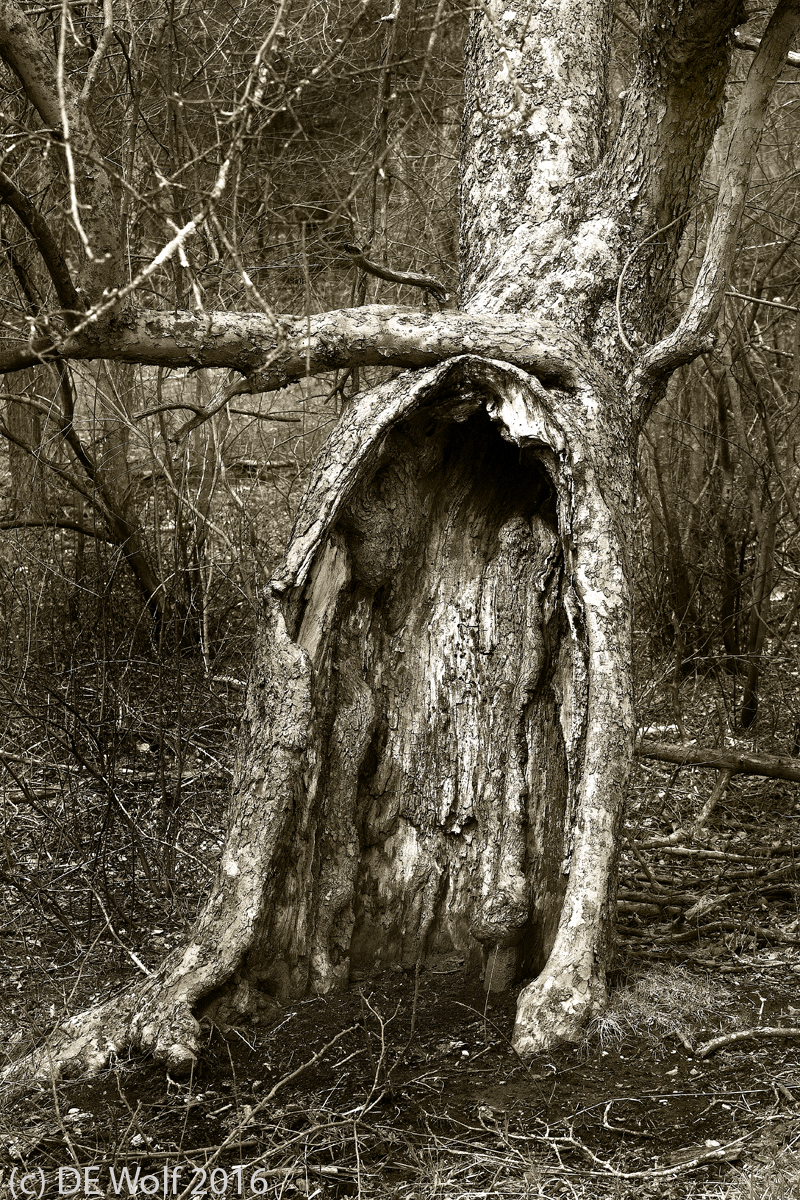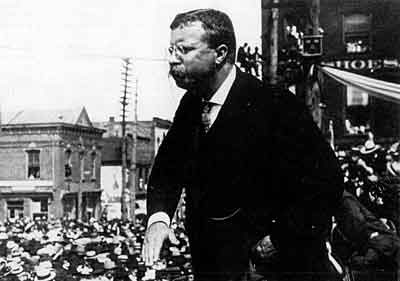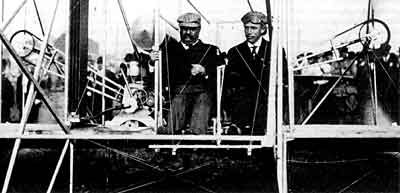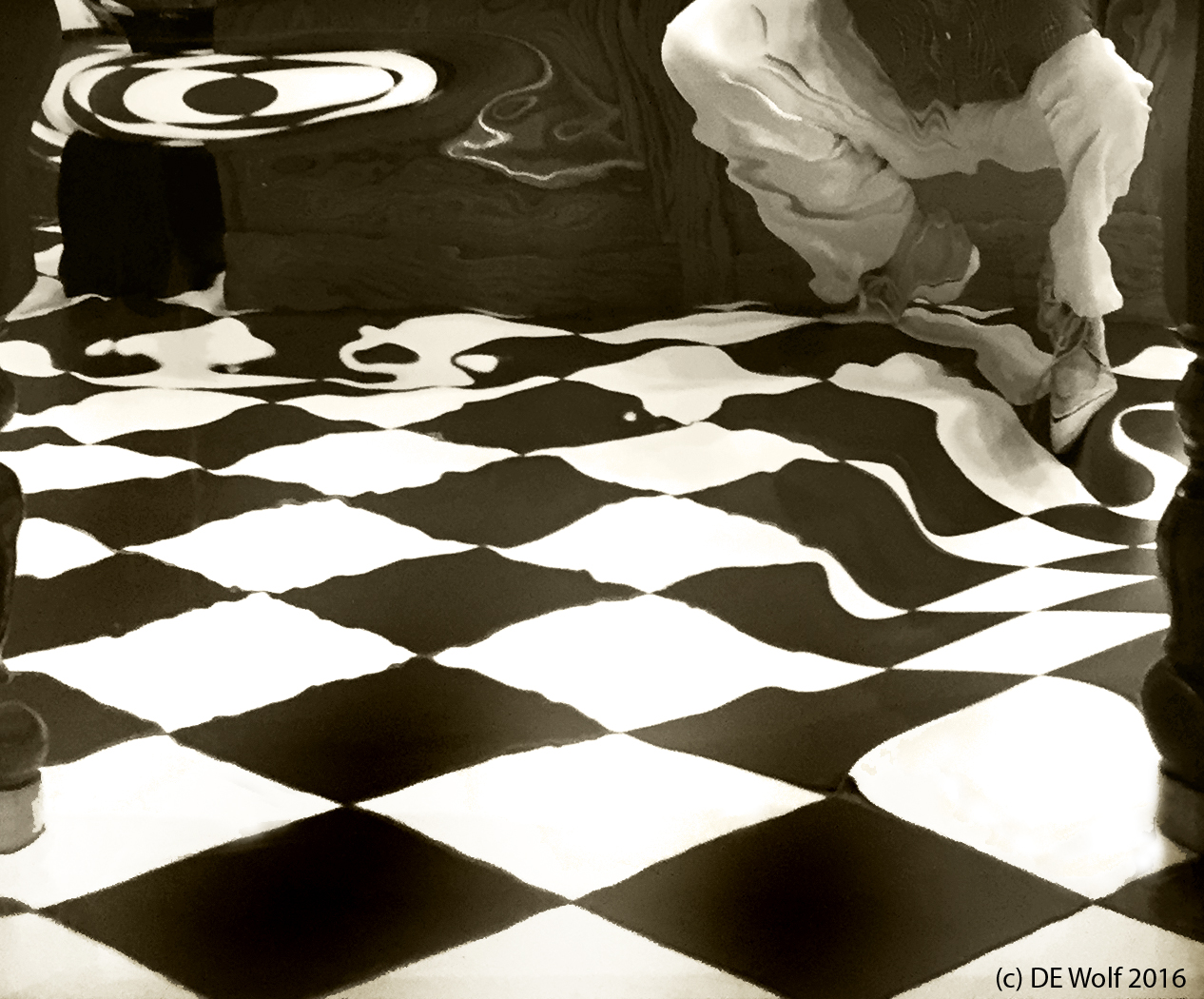
Figure 1 – IPhone Distortion Study, Natick, MA. (c) DE Wolf 2016.
I have been blogging and talking to readers a lot recently about the Cthulhu mythos of H.P Lovecraft. These seem dark times, and there is a certain foreboding sense to dark places – hence, long-forgotten ammunition bunkers and twisted, eaten trees.
For those of you who don’t know much about this mythos, it is an ongoing theme in Lovecraft’s work that emphasizes the complete irrelevance of mankind in the face of the cosmic horrors of the universe. Lovecraft made frequent reference to the “Great Old Ones”: a loose pantheon of ancient, and powerful deities from space, who once ruled the Earth and who have since fallen into a deathlike sleep. But – dum dee-dum-dum – they may reawaken if mankind crosses the line and becomes too wicked. Anybody watching the news? So you have a world where dread creatures burrow underground, live like troglodytes, and rise at night to eat the dead. Well, you asked. Oh sorry, actually you didn’t.
These strange creatures travel in Einstein’s four dimensional universe of space-time, which was exciting the scientific community at the time. As a result there can be a loss of correlation between perceptions. You may listen to the roar of the wind through the trees, the cracking of limbs, the explosions as they plummet to the ground; but look outside and not a leaf is moving
Among the absolute greatest of Lovecraft’s works is a short story entitled “Pickman’s Model.” The story is a dialogue between an unnamed “speaker” and someone named Eliot. It tells us of an encountered with an artist Richard Upton Pickman. Pickman paints scenes of horror with an amazingly rare skill. And it is a telling point that photography plays prominently in the story’s plot.
“You know, it takes profound art and profound insight into Nature to turn out stuff like Pickman’s. Any magazine-cover hack can splash paint around wildly and call it a nightmare or a Witches’ Sabbath or a portrait of the devil, but only a great painter can make such a thing really scare or ring true. That’s because only a real artist knows the actual anatomy of the terrible or the physiology of fear—the exact sort of lines and proportions that connect up with latent instincts or hereditary memories of fright, and the proper colour contrasts and lighting effects to stir the dormant sense of strangeness. I don’t have to tell you why a Fuseli really brings a shiver while a cheap ghost-story frontispiece merely makes us laugh. There’s something those fellows catch—beyond life—that they’re able to make us catch for a second. Doré had it. Sime has it. Angarola of Chicago has it. And Pickman had it as no man ever had it before or—I hope to heaven—ever will again.”
But Pickman’s scenes are too vivid and troubling for polite society. He has been “dropped” by the art galleries. The speaker has gone and sought out Pickman and visited the artist’s studio late a night. He is taken down into the basement, a dungeonous place, where Pickman has his studio.
“A large camera on a table excited my notice, and Pickman told me that he used it in taking scenes for backgrounds, so that he might paint them from photographs in the studio instead of carting his outfit around the town for this or that view. He thought a photograph quite as good as an actual scene or model for sustained work, and declared he employed them regularly.“
So Pickman claims that the photographs are used to record backgrounds. But, of course, the speaker soon realizes otherwise. And the story ends with with Pickman and his quest running from blood-curdling scrambing noises and the terrifying revelation by the speaker.
“Don’t ask me to explain or even conjecture about what I burned. Don’t ask me, either, what lay behind that mole-like scrambling Pickman was so keen to pass off as rats. There are secrets, you know, which might have come down from old Salem times, and Cotton Mather tells even stranger things. You know how damned life-like Pickman’s paintings were—how we all wondered where he got those faces.
Well—that paper wasn’t a photograph of any background, after all. What it shewed was simply the monstrous being he was painting on that awful canvas. It was the model he was using—and its background was merely the wall of the cellar studio in minute detail. But by God, Eliot, it was a photograph from life.“
In a sense, it all begins with the statement that seeing is believing. But what does seeing mean? It is to see in the flesh and blood with one’s own eyes. The painter is known to use artifice; so horrible creatures in a painting are merely a manifestation of the disturbed mind of the artist. But a photograph? A photograph could never lie. Of course, we now know otherwise.

